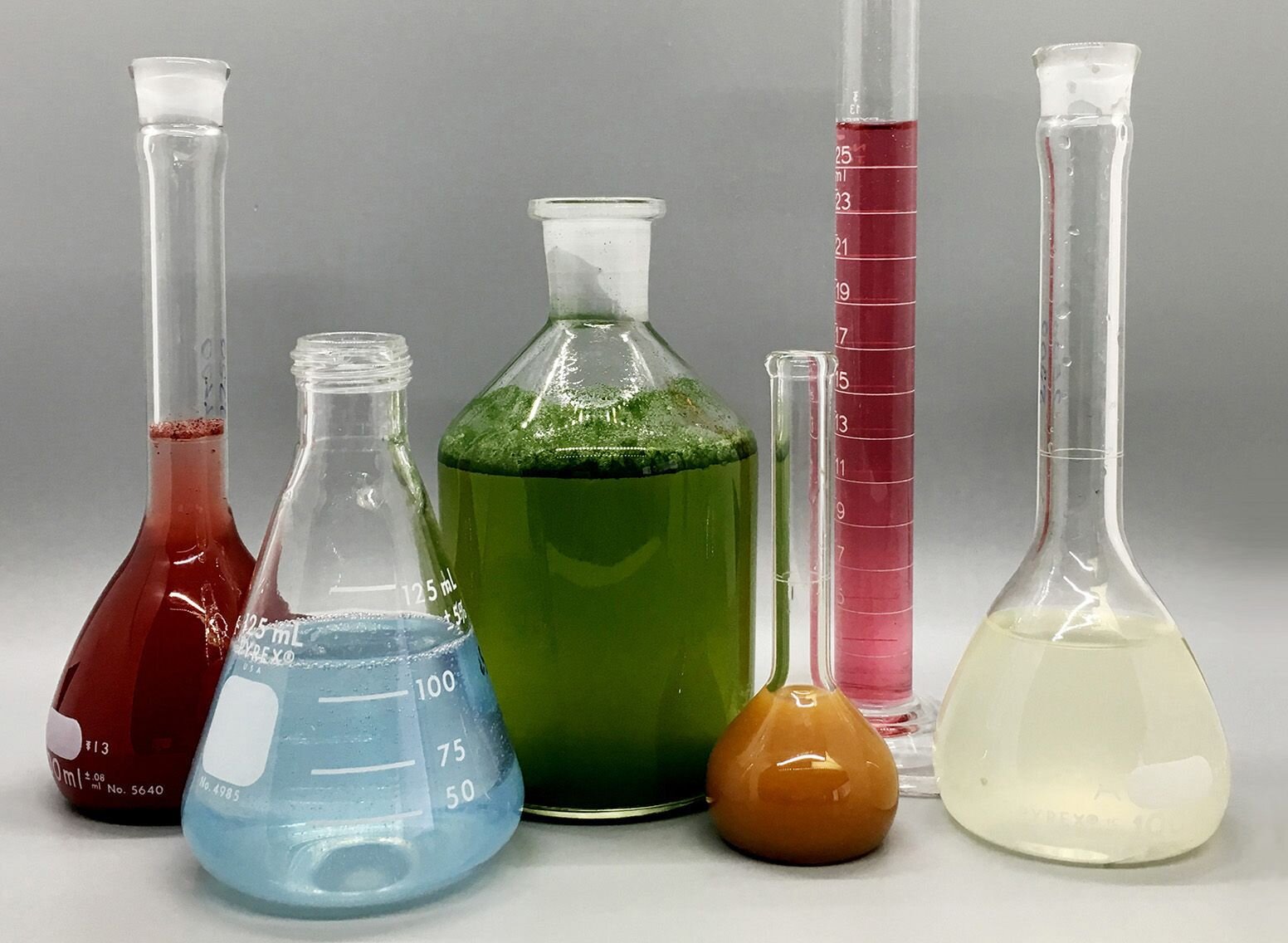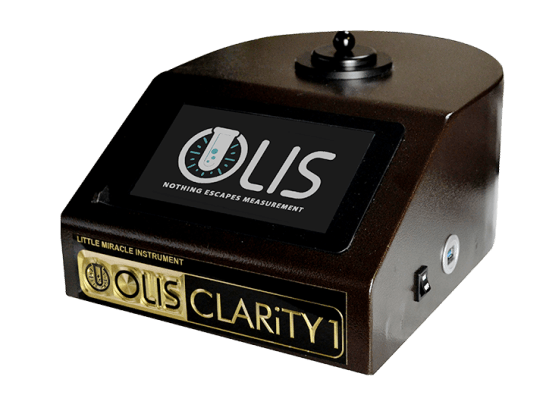Examine This Report about Uv/vis/nir
Table of ContentsMore About Uv/vis/nirCircularly Polarized Luminescence - TruthsExcitement About Uv/visUv/vis for DummiesUnknown Facts About Uv/vis/nirThe 30-Second Trick For Uv/visSome Ideas on Uv/vis/nir You Need To KnowNot known Facts About Uv/vis/nirThe Spectrophotometers DiariesThe Single Strategy To Use For Circular DichroismThe Buzz on Uv/visThe Facts About Spectrophotometers UncoveredThe 20-Second Trick For Uv/vis/nir
It is then scanned through the sample and the recommendation solutions. Portions of the occurrence wavelengths are sent through, or reflected from, the sample and the recommendation. Electronic circuits transform the relative currents into linear transmission portions and/or absorbance/concentration worths.The transmission of a referral substance is set as a standard (datum) worth, so the transmission of all other compounds are recorded relative to the initial "zeroed" compound. The spectrophotometer then transforms the transmission ratio into 'absorbency', the concentration of specific components of the test sample relative to the initial compound.
Because samples in these applications are not easily available in large amounts, they are especially suited to being examined in this non-destructive strategy. In addition, precious sample can be saved by using a micro-volume platform where as low as 1u, L of sample is required for complete analyses. A short explanation of the treatment of spectrophotometry includes comparing the absorbency of a blank sample that does not consist of a colored compound to a sample which contains a colored compound.
Uv/vis Things To Know Before You Get This
In biochemical experiments, a chemical and/or physical home is picked and the procedure that is used is particular to that home in order to obtain more details about the sample, such as the quantity, purity, enzyme activity, and so on. Spectrophotometry can be utilized for a variety of methods such as figuring out ideal wavelength absorbance of samples, determining optimum p, H for absorbance of samples, figuring out concentrations of unidentified samples, and identifying the p, Ka of various samples.: 21119 Spectrophotometry is likewise a practical procedure for protein purification and can likewise be utilized as an approach to create optical assays of a substance.
It is possible to understand the concentrations of a two component mix utilizing the absorption spectra of the standard services of each part. To do this, it is required to understand the extinction coefficient of this mix at two wave lengths and the extinction coefficients of solutions which contain the recognized weights of the two components.

The Only Guide to Uv/vis
A lot of spectrophotometers are utilized in the UV and visible areas of the spectrum, and a few of these instruments likewise operate into the near-infrared region also. The concentration of a protein can be estimated by determining the OD at 280 nm due to the existence of tryptophan, tyrosine and phenylalanine (https://www.quora.com/profile/Julie-Ann-DeSa-Lorenz).
This approach needs a spectrophotometer capable of measuring in the UV region with quartz cuvettes.: 135 Ultraviolet-visible (UV-vis) spectroscopy involves energy levels that thrill electronic shifts. Absorption of UV-vis light thrills molecules that are in ground-states to their excited-states.
20. 8 O.D. Ink makers, printing business, textiles suppliers, and much more, require the data offered through colorimetry. They take readings in the region of every 520 nanometers along the visible area, and produce a spectral reflectance curve or an information stream for alternative presentations. These curves can be used to check a brand-new batch of colorant to check if it makes a match to specifications, e.
Excitement About Uv/vis/nir
Traditional visible area spectrophotometers can not identify if a colorant or the base material has fluorescence. This can make it challenging to handle color issues if for example one or more of the printing inks is fluorescent. Where a colorant consists of fluorescence, a bi-spectral fluorescent spectrophotometer is utilized (http://www.askmap.net/location/6824320/united-states/olis-clarity). There are 2 major setups for visual spectrum spectrophotometers, d/8 (round) and 0/45.
Researchers utilize this instrument to measure the amount of compounds in a sample. If the compound is more concentrated more light will be soaked up by the sample; within small varieties, the Beer, Lambert law holds and the absorbance in between samples vary with concentration linearly. In the case of printing measurements two alternative settings are typically utilized- without/with uv filter to manage much better the result of uv brighteners within the paper stock.
Some Ideas on Uv/vis/nir You Need To Know
Some applications require small volume measurements which can be performed with micro-volume platforms. As described in the applications section, spectrophotometry can be used in both qualitative and quantitative analysis of DNA, RNA, and proteins. Qualitative analysis can be utilized and spectrophotometers are used to record spectra of substances by scanning broad wavelength regions to determine the absorbance great site homes (the strength of the color) of the compound at each wavelength.

Circularly Polarized Luminescence - The Facts
One significant element is the kind of photosensors that are available for different spectral areas, however infrared measurement is likewise difficult due to the fact that practically everything produces IR as thermal radiation, particularly at wavelengths beyond about 5 m. Another complication is that rather a few materials such as glass and plastic soak up infrared, making it incompatible as an optical medium.
Samples for IR spectrophotometry might be smeared between two discs of potassium bromide or ground with potassium bromide and pressed into a pellet. Where aqueous services are to be measured, insoluble silver chloride is utilized to construct the cell. Spectroradiometers, which run practically like the noticeable area spectrophotometers, are created to determine the spectral density of illuminants. 2013. p. 13. Allen, DW; Cooksey, C; Tsai, BK (Nov 13, 2009). "Spectrophotometry". Retrieved Dec 23, 2018. Ninfa AJ, Ballou DP, Benore M (2010 ). Fundamental Lab Approaches for Biochemistry and Biotechnology (2nd ed.). Hoboken: Wiley & Sons. ISBN 9780470087664. OCLC 488246403. Schwedt G (1997 ). The vital guide to analytical chemistry.
Oke, J. B.; Gunn, J. E.
Facts About Uv/vis/nir Uncovered

Ninfa AJ, Ballou DP, Benore M (2015 ). Essential Laboratory Techniques for Biochemistry and Biotechnology (3, rev. ed.). UV/Vis/NIR. Laboratory Devices.
Not known Facts About Uv/vis
"Applied Spectrophotometry: Analysis of a Biochemical Mixture". Biochemistry and Molecular Biology Education. Journal of Biochemistry Education.
The Best Guide To Circularly Polarized Luminescence
U.S. Department of Commerce National Bureau of Standards unique publication; 378. Washington, D.C.: U.S. National Bureau of Standards.
The process starts with a regulated light source that lights up the analyzed sample. When it comes to reflection, as this light communicates with the sample, some is taken in or given off. The released light journeys to the detector, which is evaluated, quantified, and provided as industry-standard color scales and indices.
All terms are examined over the noticeable spectrum from 400 to 700 nm. In the case of transmission, when the light interacts with the sample, it is either absorbed, shown, or transmitted.
The Single Strategy To Use For Uv/vis/nir
Examples consist of APHA (American Public Health Association) for watercolor and pureness analysis, ASTM D1500 for petrochemical color analysis, edible oil indices utilized in food, and color analyses of drinks. All terms are evaluated over the visible spectrum from 400 to 700 nm.
Image Credit: Matej Kastelic/ Dr. Arnold J. Beckman and his associates at the National Technologies Laboratories first developed the spectrophotometer in 1940. In 1935 Beckman established the business, and the discovery of the spectrophotometer was their most ground-breaking innovation. Dr. Bruce Merrifield, a Nobel prize-winning biochemist, mentioned that the development of the spectrophotometer was "probably the most important instrument ever developed towards the improvement of bioscience." Before the discovery of the spectrophotometer, chemical analyses took weeks to finish, with 25% precision.
Examine This Report about Circular Dichroism
99% accuracy. In time, scientists kept enhancing the spectrophotometer design to enhance its performance. For circumstances, the UV abilities of the design B spectrophotometer were enhanced by changing the glass prism with a quartz prism. Ultimately, the Design DU was produced, consisting of a hydrogen light and other enhancements. This instrument was used in commercial labs, clinics, and chemistry and biochemistry departments.
Normally, a spectrophotometer is made up of two instruments, particularly, a spectrometer and a photometer. A standard spectrophotometer contains a light source, a monochromator, a collimator for straight light beam transmission, a cuvette to place a sample, and a photoelectric detector.
The 6-Second Trick For Circularly Polarized Luminescence
There are various types of spectrophotometers in different sizes and shapes, each with its own purpose or performance. A spectrophotometer identifies how much light is shown by chemical parts. UV/Vis/NIR. It measures the difference in light strength based on the total quantity of light presented to a sample and the quantity of beam that goes through the sample solution
A spectrophotometer is utilized to identify the concentration of both colorless and colored solutes in a solution. This instrument is utilized to figure out the rate of a reaction.